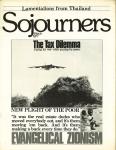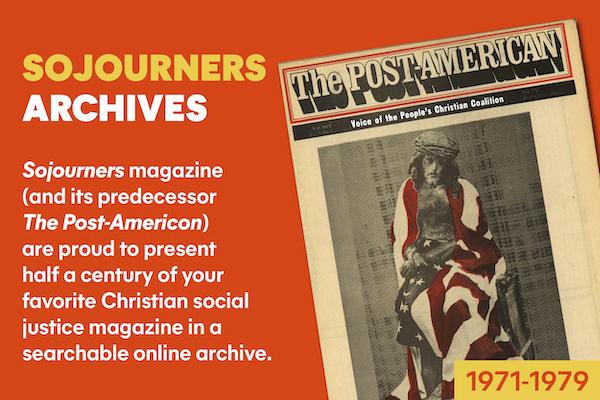The aesthetic problems of rendering the holocaust on film are immense, verging on agonizing questions about God’s loving kindness and human responsibility. Even though one may never have heard of the holocaust, as many middle-aged Americans and their offspring have not, the event shadows our unconscious, haunting and shaping our individual and our collective being, making us unsure in the ambiguity of our inmost selves whether we most resemble murderer or victim. Meditation on the holocaust--and the event demands more than mere study--has much to tell us if we can but sustain our courage to ask the right questions. We must attend to its murmurs about the peculiar modern face of evil, and about God or his absence in history.
It is the manner of that attending and reflection that needs examination. It seems inevitable now that in the next few years the American public will be exposed to a plethora of films that have as their motive interest Nazism and its war against the Jews. A convergence of factors makes the time ripe for this flourishing.
First, humanity seems to have at its core a strain of curiosity, distorted and morbid as it often is, about humankind in extremis, humankind as sufferer of evil, or humankind as incarnation of evil. Ignorance of the facts, naiveté, and the partly morbid appeal of the subject matter make for a susceptible and eager audience.
Secondly, if history is a guide, Western culture is now psychologically prepared to deal with the catastrophe of identity and value which was the holocaust. Jewish theologian Richard Rubenstein has pointed out, for example, that among the published sermons of Southern clergy there is no mention of the defeat of the Confederacy for some three decades following the Civil War. The structure of human consciousness apparently requires some hiatus of reflection wherein the soul can muster its intellectual and spiritual resources. In our psychic frailty, the weight of disaster overburdens. Whether victim or assailant, the self needs first to survive physically, to re-establish normalcy in the ritual of the prosaic, of family and work. Only then can it nourish the scored remnants of self.
But whatever lessons we might learn will be lost if we do not now examine and listen faithfully. Thus far the record of holocaust films is mixed. One breed of film, most notably The Odessa File and the recent Marathon Man, exploits lurid interest in brutality, conspiracy, and secret police, pandering intentionally to our worst suspicions, offering a kind of pornography of the holocaust.
On the other end of the spectrum is, first, the memorable Pawnbroker of the mid-sixties, the first serious attempt to come to terms with the complex moral issues inherent in the holocaust. Best of the lot is the American Film Theater’s The Man in a Glass Booth, with Harold Pinter’s radical alteration of Robert Shaw’s play of that name. It is perhaps one of the richest imaginative experiences to be had.
The Voyage of the Damned attempts to be serious in its rendering of one brief frame in the modern world’s kaleidoscope of hell. Ultimately, however, it backs away from a fully satisfying probe in two conspicuous ways.
While making somewhat free with history for the sake of dramatic effectiveness, it remains more or less faithful to the spirit of the event it describes. In May, 1939, as a supposed good will venture, the German government allowed 937 Jewish refugees of various social classes (those who could gather $343 for passage) to board the Hamburg-American liner St. Louis, which was to deposit the passengers in Cuba.
Unknown to the passengers or to the ship’s captain, the Cuban government had reneged on its agreement to admit the refugees eight days before the St Louis left its German port. When the ship was not allowed to enter Cuba, an international Jewish relief agency, the Joint Distribution Committee, unsuccessfully sought entrance for the exiles into the United States, Britain, and other European countries. Only days before the ship would have returned to Hamburg did the Committee finally gain permission for the wanderers to settle temporarily in four European countries. Six hundred of the refugees eventually died in death camps, after their host countries were overrun by German forces.
This last bit of information is important, both historically and symbolically. For as the film progresses the viewer learns that Hitler’s gesture of compassion, interpreted contemporarily as a softening of Nazi anti-Semitism, was no more than a charade designed to distribute the guilt for “the Jewish problem.” The Germans knew that Cuba would refuse entrance. The gauntlet was then thrown to the rest of the free and Christian world. As a German agent finally explains to the bewildered Captain Schroeder of the St. Louis, the refusal of other nations to admit the Jews will “force the world to realize that there is a problem with these people.” In ignoring the plight of the Jews, the world becomes complicitous, and thus, when the final solution of mass death is initiated, “no one will have the right to object.”
My first objection to Voyage is that the German publicity ploy was successful, but the film avoids showing how successful. Perhaps if the full measure of that success were shown, the film would prove unpalatable to American audiences. Voyage devotes approximately a third of its two and a half hour length to showing the machinations of the Cuban government as it muddles through to its fateful decision. Throughout, the Cuban principals are portrayed as bureaucrats interested only in money, women, and cigars--as corrupt backwater buffoons. From the start, moral reflection among them, except for that of an ineffectual Secretary of State, is completely absent. The Cubans are inept, but worse than that, uncivilized.
The stereotypical rendering of the Cubans as decadent Keystone cops is, first of all, surely exaggerated, and perhaps subtly racist. Secondly, the lengthy attention to the Cuban connection displaces a painful and more necessary focus on the indifference of the American government. As uncivilized as they were, the Cubans were at least reasonably explicit in dealing with the Joint Distribution Committee: money for people. They would reconsider allowing the Jews to enter for a half million dollars.
What of the response of the United States, civilized and avowedly humane? The film mentions the American refusal to allow the Jews to enter its boundaries (the passengers had American visas that would allow them to enter, up to immigration quotas), but it does not at all explore the motivation behind the decision or the bureaucratic stagnation leading to it. The record of the major allies in responding to Hitler’s persecution of the Jews, now well-documented, gives tragic cogency to Elie Wiesel’s contention that the holocaust represents, “the failure of two thousand years of Christian civilization.”
The focus on the easily assailable corruption of Cuba vitiates the film’s question of responsibility. One might expect callousness and greed among officials of the stripe portrayed. But what might we say concerning the performance of America as the leader of the civilized world? In August, 1939, the German periodical Der Weltkampf with self-congratulatory irony, put the issue well: “We are saying openly that we do not want the Jews, while the democracies keep on claiming that they are willing to receive them--and then leave the guests out in the cold! Aren’t we savages better men after all?”
Savagery disguised by the subterfuge of rhetoric and the veneer of civilization. Admittedly, this is a difficult moral posture to convey artistically. Still, this burden must be assumed; otherwise it is perhaps better to remain silent than to excuse or dismiss or ignore. Voyage’s passing reference to the American refusal is telling but inadequate. While the St. Louis is anchored off Florida awaiting word of the American decision, a Coast Guard cutter approaches to instruct it to vacate the United States’ territorial waters.
Which brings me to a second objection to the film. Much to its credit, The Voyage of the Damned movingly, if somewhat disjointedly, chronicles the agonies and despair of four groups of passengers as their homelessness becomes increasingly apparent. But it botches its portrayal of the anti-Semitic Nazis. With the exception of the St. Louis Captain Gustav Schoeder (Max Von Sydow), a non-party member who was decorated after the war for his kindly treatment of the Jews, the Nazis are seen throughout as fanatics, with an inordinate degree of Prussian sternness and fervor. Indeed, they are put forth as malignant versions of the bumbling German captors in Hogan’s Heroes. The effect of this caricature, combined with the film’s historical selectivity, is to dilute the moral-psychological reality of the holocaust.
But the prominent Nazis were not mindless fanatics; therein lies the real horror of the holocaust. How comforting if the Nazis’ persecution were an aberration from the basic sanity of twentieth century humanity. Rather, as Richard Rubenstein has suggested, it is more useful “to understand the Holocaust . . . as the expression of the most profound tendencies of Western civilization in the twentieth century” (The Cunning of History: Mass Death and the American Future). One of the startling facts of post-holocaust history is that, as’ Thomas Merton has observed in his “Devout Meditation in Memory of Adolf Eichmann,” Eichmann, the engineer of the whole project, was judged to be sane: well-adjusted, rational, conscientious, respectful, loyal, calm, efficient, even a little queasy when witnessing violence first hand. (Raids on the Unspeakable)
Elie Wiesel, a Hungarian survivor of the death camps, puts the matter clearly.
Yes, it is possible to defile life and creation and feel no remorse. To tend one’s garden and water one’s flowers but two steps away from barbed wire. To experiment with monstrous mutations and still believe in the soul and in immortality. To go on vacation, be enthralled by the beauty of a landscape, make children laugh, and still fulfill regularly, day in and day out, the duties of a killer. (One Generation After)
By stereotyping and distorting the betes noirs of the modern century, thinking them only a remnant of the barbaric, we might well ease our own potential discomfort, but at the cost of overlooking profound lessons about our common humanity. Most importantly, we contribute to the destruction of the possibility of sanity and evaluation.
And this is the pitfall of the cinematic renderings of the holocaust. The Voyage of the Damned, for one, seems to want it both ways. On the one hand, it wishes to display the horrors of the holocaust--evident enough in the statistics. Moreover, it avoids examination of the situation’s intrinsic, persistent moral questions. Unless there is absolute seriousness and fidelity in examining its history, better to leave, as an act of reverence for the dead, the story untouched. Better to remain silent than to dessicate, trivialize, exonerate, or defile.
When this article appeared, Roy M. Anker was an assistant professor of English at Northwestern College in Orange City, Iowa.

Got something to say about what you're reading? We value your feedback!
